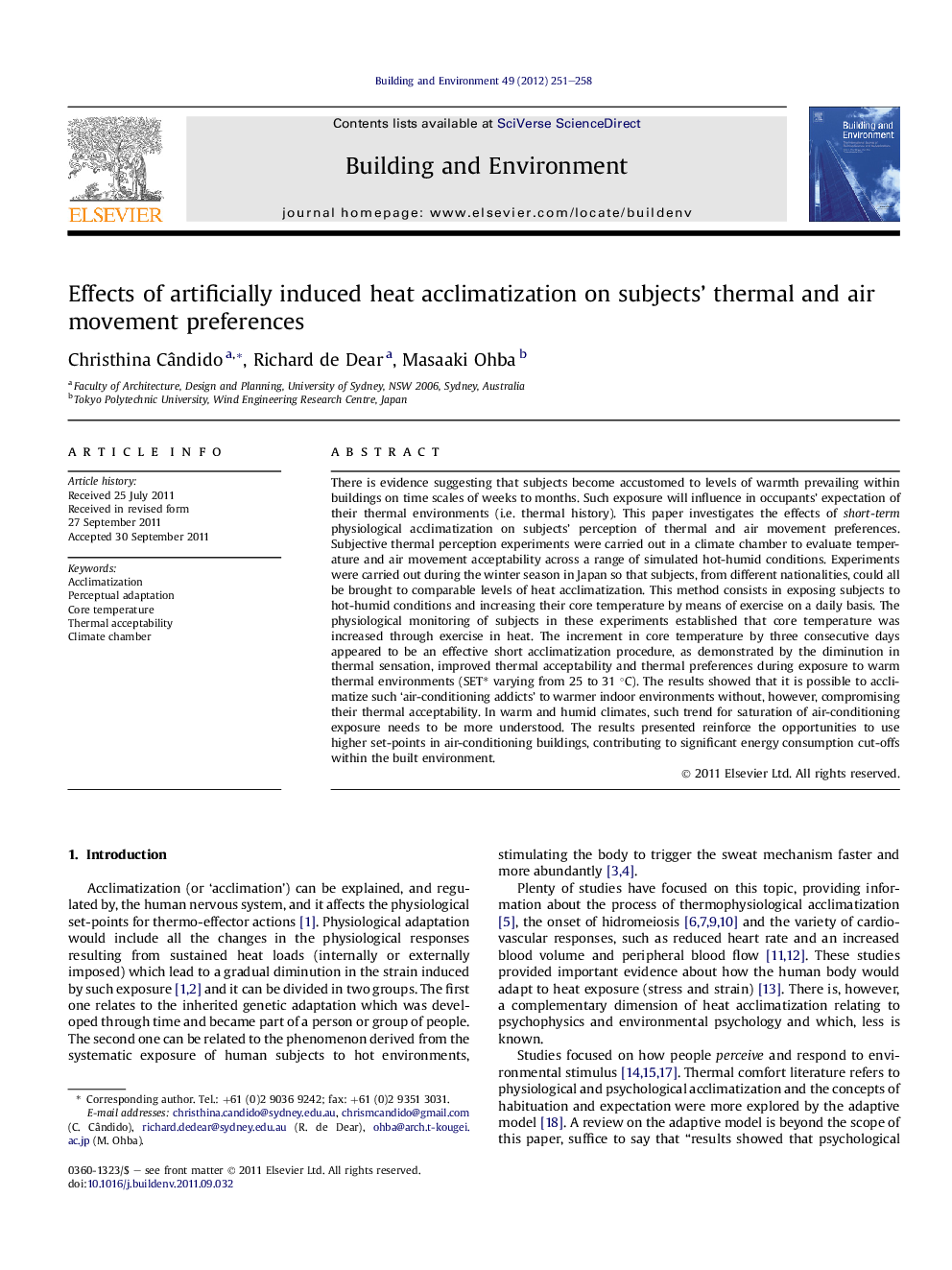| کد مقاله | کد نشریه | سال انتشار | مقاله انگلیسی | نسخه تمام متن |
|---|---|---|---|---|
| 248651 | 502577 | 2012 | 8 صفحه PDF | دانلود رایگان |

There is evidence suggesting that subjects become accustomed to levels of warmth prevailing within buildings on time scales of weeks to months. Such exposure will influence in occupants’ expectation of their thermal environments (i.e. thermal history). This paper investigates the effects of short-term physiological acclimatization on subjects’ perception of thermal and air movement preferences. Subjective thermal perception experiments were carried out in a climate chamber to evaluate temperature and air movement acceptability across a range of simulated hot-humid conditions. Experiments were carried out during the winter season in Japan so that subjects, from different nationalities, could all be brought to comparable levels of heat acclimatization. This method consists in exposing subjects to hot-humid conditions and increasing their core temperature by means of exercise on a daily basis. The physiological monitoring of subjects in these experiments established that core temperature was increased through exercise in heat. The increment in core temperature by three consecutive days appeared to be an effective short acclimatization procedure, as demonstrated by the diminution in thermal sensation, improved thermal acceptability and thermal preferences during exposure to warm thermal environments (SET∗ varying from 25 to 31 °C). The results showed that it is possible to acclimatize such ‘air-conditioning addicts’ to warmer indoor environments without, however, compromising their thermal acceptability. In warm and humid climates, such trend for saturation of air-conditioning exposure needs to be more understood. The results presented reinforce the opportunities to use higher set-points in air-conditioning buildings, contributing to significant energy consumption cut-offs within the built environment.
► Subjects thermal acceptability changed after acclimatization.
► Air-conditioning addicts can be acclimatized.
► Results corroborate the concept of perceptual adaptation and thermal history.
Journal: Building and Environment - Volume 49, March 2012, Pages 251–258